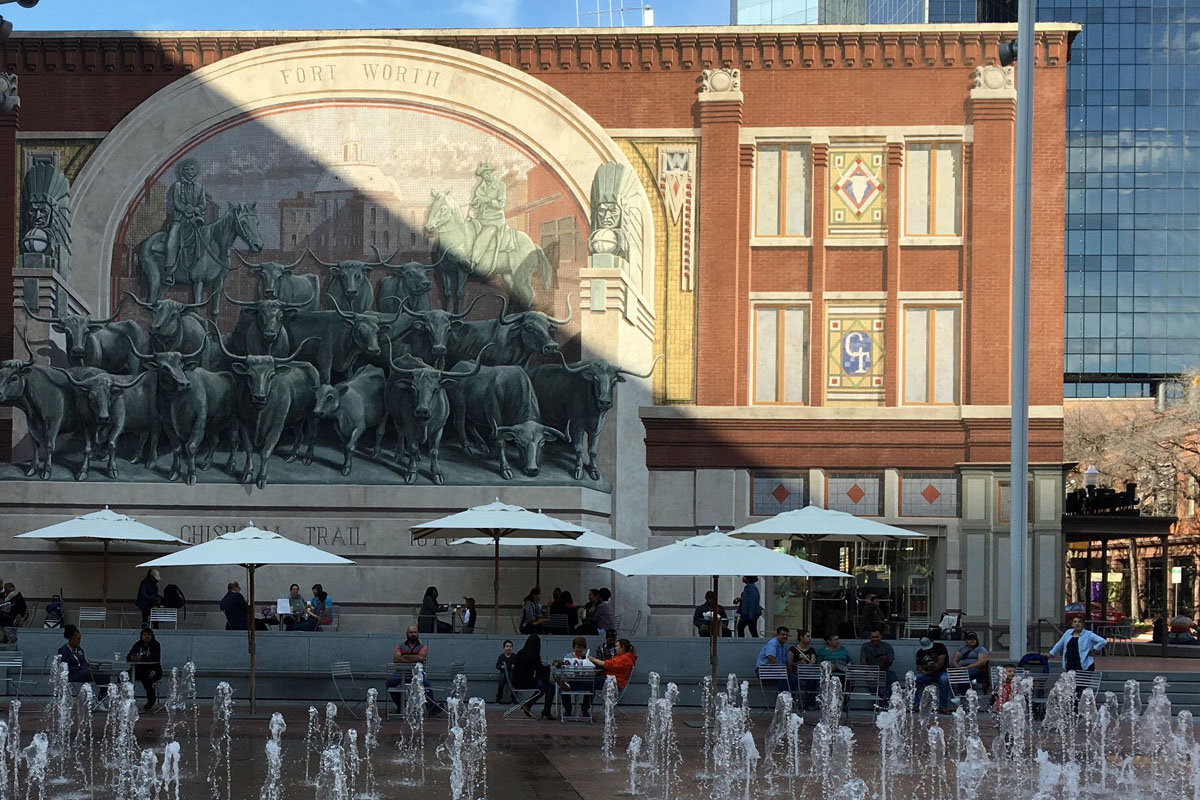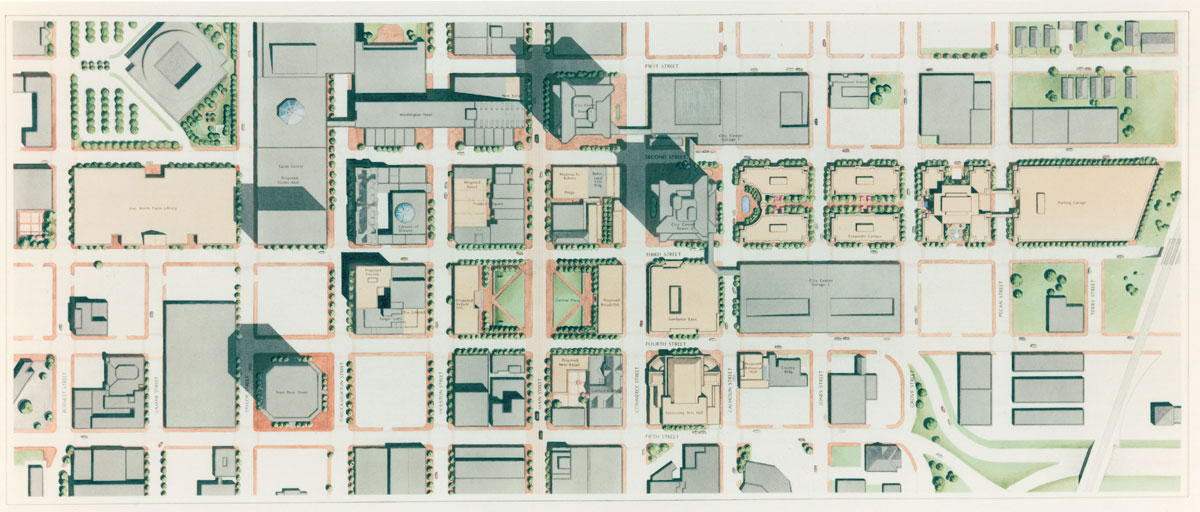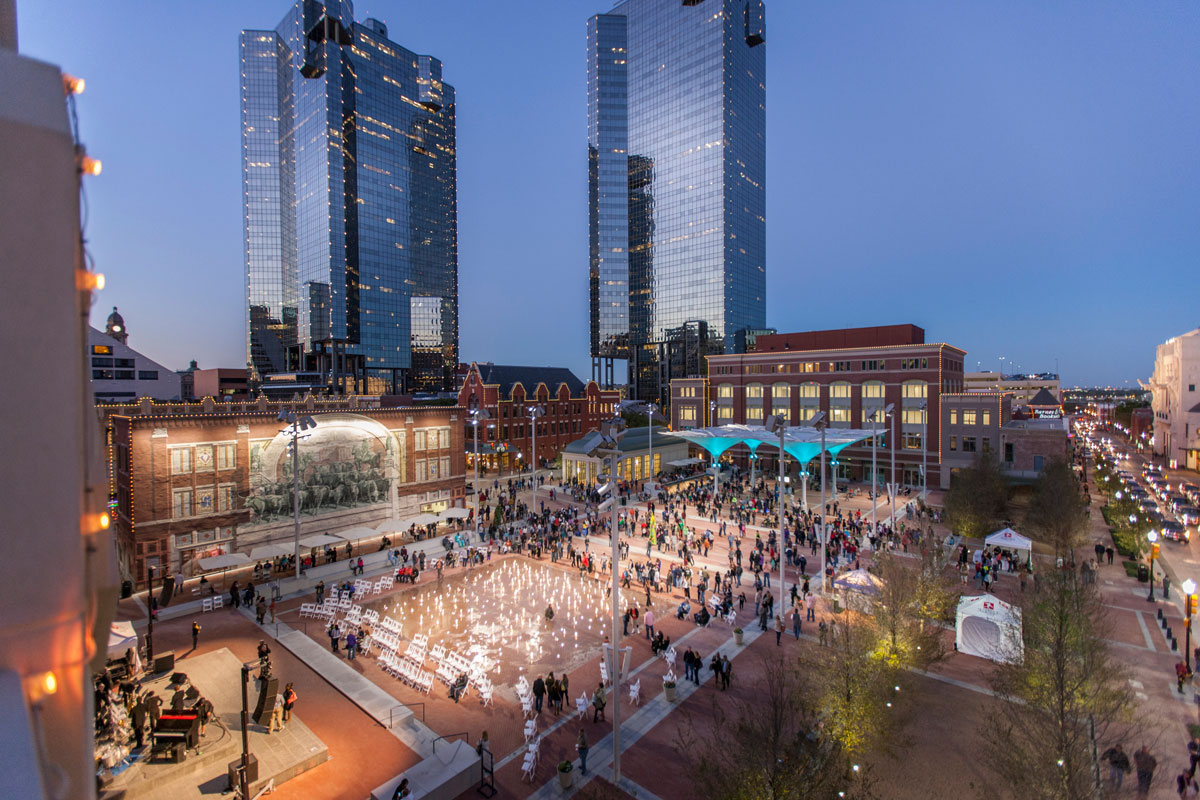Fort Worth, an Urban Renaissance
-

Mural at Sundance Square
Good urban design has never been harder to achieve. So many aspects of modern life, from mass car ownership to internet shopping, have conspired against the making of successful towns. I see this close to home, when driving into Ipswich you come to the A12 / A14 junction. Here a cluster of large retail units house a Tesco, a Toys R Us, a Burger King and several other outlets. This is all very accessible - you can park outside, free and easily, without the bother of traffic surrounding central Ipswich. As time goes on places like this grow and the town centre suffers. This trend seems to continue unchecked but fortunately, some planners and architects are now beginning to take this problem seriously. Last February I went on a tour organised by the Institute of Classical Architecture & Art and saw the tremendous work done in Forth Worth, a city in North Central Texas. Over a long period, sound urban principles, masterminded by David Schwarz Architects, have had an astonishing effect on the town.
In the late 19th century, Fort Worth became an important trading post for cowboys at the end of the Chisholm Trail. When oil was found in West Texas in the early 20th century, and again in the late 1970s, Fort Worth was at the centre of the associated business of selling and dealing, a role that it still maintains.
Like so many American towns, Fort Worth had suffered due to mass car ownership that, from the 1950’s onwards, forced the life of town out to the suburbs. The architecture of the centre became designed to please the car and consequently, multi storey carparks and hideous high-rise towers became the order of the day. As a result, the downtown area became unfit for people to enjoy and so it was abandoned with the inevitable rise in crime and neglect so common in modern town centres. This unfortunate vicious circle would have continued unchecked had it not been for the intervention of the Bass family who put a vast amount of money, time and energy into rehabilitating the centre. Renewal came, initially, block by block but there was a long-term desire for residential, commercial and cultural ambitions to be encompassed and largely focussed around a centrepiece. The brief was to create a citizen-minded space to accommodate large events as well as enable day to day use. This eventually became realised as Sundance Square, completed in 2013.
-

Site plan of downtown Fort Worth
The finished square is made up of new and renovated buildings in a pedestrian oriented urban environment bringing new residents and services into a vibrant civic space - now the most significant public outdoor gathering space in the entire region. Within the square are three major urban interventions, the largest of which is a fountain pad on the western side where children are encouraged to play. This is looked over by a vast stunning mural of cows going to market by Richard Haas. At the other end of the Square are four impressive umbrellas providing shade by day and lighting by night. These separate entities give life to the square and are instrumental to its success.
-

Sundance Square, Fort Worth
As well as the urban form, the square hosts a variety of regular events including concerts, film nights and yoga classes which are all free. This has been a considered strategy as the events bring people into the square, knowing they will spend money in shops, cafes and restaurants.
Down the road is the newly built concert hall designed in a spirited Art Deco style. It is an impressive symbol of civil pride with two massive trumpeting angels which announce the building to a slightly under scaled street - what street would be big enough to house these celestial beings? A little overstated perhaps, but I enjoy the confidence and sheer bravura, which we rarely see on this side of the pond.
-

Concert Hall
-

Concert Hall
It takes a great deal of money, patience and creativity to turn around a town in this way. However, once the virtuous circle starts the rewards are huge, not only does the town become a pleasant place to live, this soon turns into increased property values and rental income for retail. It is not for every investor because it needs to be considered in the long term, with investors taking pleasure in the less tangible reward of simply doing the right thing.
Francis Terry
-

Sundance Square, Fort Worth



